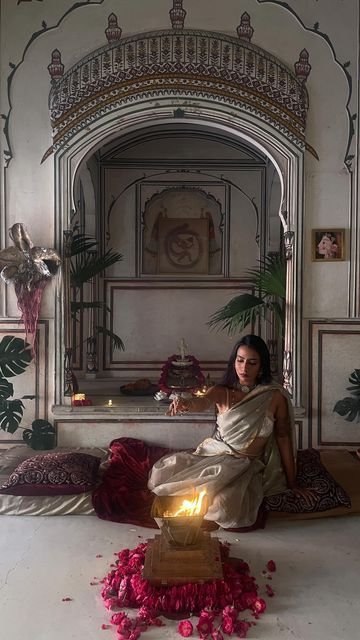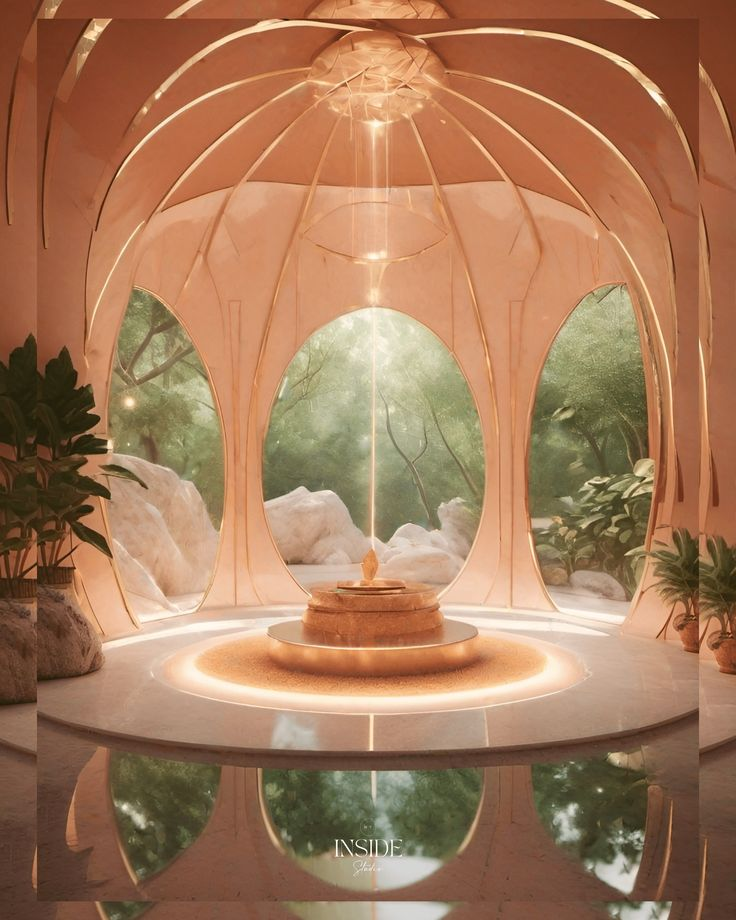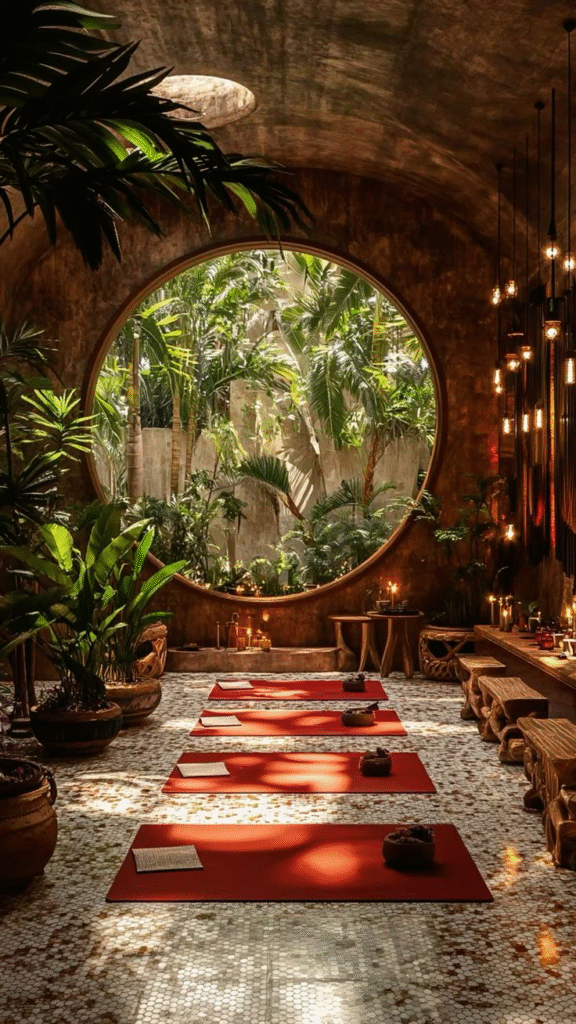Can a room pray with you? Can walls exhale peace?
In 2025, we’re seeing a new movement at the intersection of technology, spirituality, and interior design—and it’s redefining the very idea of a meditation room.
Gone are the days of flat mats, scented candles, and empty corners passed off as “meditation zones.” Today, architects and designers are embracing 3D printing, parametric design, and sacred geometry to shape meditation rooms that don’t just house stillness—they become it.
Let’s explore this quiet revolution.
🌐 The Shift: From Room to Ritual Space
● Traditional meditation rooms were add-ons—decorated afterthoughts within homes and offices.
● Now, the meditation space is often the centerpiece—a curated, sculptural experience that reflects intention.
● Designers are no longer asking, “Where should the meditation room go?” They’re asking, “What form should mindfulness take?”
This evolution is largely driven by the growing demand for sensory-conscious environments, digital detox spaces, and a renewed global interest in inner well-being. The irony? Much of this spiritual revolution is being enabled by tech innovation—especially 3D printing.

🧠 The Psychology Behind Sculptural Silence
Why shape a room like a cocoon, a spiral, or a mandala?
● Humans have long been affected by form and symmetry. Circular spaces have been used for centuries in temples and stupas because they support a sense of infinite continuity.
● Enclosure and form help signal the brain to shift from alertness to introspection.
● Recent neuroscience shows that curved, biomorphic spaces can lower cortisol levels and increase alpha brainwave activity, which is linked to relaxation and creativity.
So when a meditation pod or room is shaped like a 3D-printed womb, it’s not just aesthetic—it’s neurological.
🖨️ How 3D Printing Is Transforming Spiritual Design
Let’s break it down:
● Complex Geometry: 3D printing allows for intricate lattice structures, fluid spirals, and organic shapes that are impossible with conventional construction.
● Biophilic Forms: Printed designs can mimic shells, leaves, flowers, and sacred geometry—naturally calming visual languages.
● Custom Experiences: Spaces can be tailored to one’s body proportions, breath patterns, and even spiritual beliefs.
● Eco-Friendly Materials: Some meditation pods are printed using mycelium, bamboo composites, or recycled sand, blending sustainability with sanctity.
Take, for example, the ‘Teraqua Meditation Pavilion’ in Goa—a spiraling 3D-printed clay enclosure shaped like a blooming lotus. With no corners, it naturally diffuses sound, light, and thought.

🔍 Case Studies: Meditative Interiors That Break the Mold
Here are three of the most exciting examples around the world:
▪ “The Mandala Dome” – Japan
● Designed by a Zen architect using parametric algorithms and printed clay.
● Every wall curve is derived from Fibonacci ratios.
● Interior feels like being inside a seashell—amplifies breath, muffles outside noise.
● Instead of paint, the walls were embedded with charcoal and rose quartz powder during printing.
▪ “InnerShell” Pod – Netherlands
● A portable, 3D-printed meditation capsule used in corporate wellness programs.
● Soundproof, biodegradable, and shaped like a human ear.
● Comes with embedded heat sensors and natural aroma infusers.
● Designers claim it helps employees enter a meditative state in under 4 minutes.
▪ “The Silence Pavilion” – Ahmedabad, India
● Developed in collaboration with Buddhist monks and MIT engineers.
● Printed using compressed red earth and cow dung ash.
● Echoes the traditional stupa form but reinterpreted as a single-folded shell.
● Light enters only through a pinhole aperture, resembling a third eye on the roof.

📏 Design Vocabulary of Spiritual Interiors (2025 Edition)
To truly understand this trend, we need to upgrade our vocabulary:
● Bio-Spatial Morphology – Designing spaces based on organic growth patterns and natural algorithms.
● Sacred Minimalism – Reducing material use while amplifying spiritual symbolism.
● Sensorial Choreography – Designing the path, scent, and sound journey of a meditator inside the space.
● Neurodesign – Creating environments that trigger brain activity aligned with peace and clarity.
● Ambient Ritual Tech – Using smart tech not for distraction but to amplify ritual—e.g., walls that glow softly with your breath pattern.
This is not just design—it’s design with reverence.
🔄 The New Spiritual Tech Loop
What makes this revolution so interesting is its feedback loop:
● You bring your intention.
● The space responds to your presence.
● It shifts its lighting, scent, or sound.
● You go deeper within.
● Your brain waves slow.
● The space senses it—and becomes even quieter.
This is where 3D-printed meditation rooms are going: toward adaptive spirituality.
🌱 Materials That Meditate With You
Traditional meditation rooms used wood, stone, or fabric. But today, 3D-printing unlocks new materials, many of which are spiritually symbolic.
● Hempcrete – Calms air quality and holds thermal memory.
● Mycelium foam – Softens acoustics and is biodegradable.
● Crushed marble and turmeric resin – Used for grounding, Vastu, and sacred textures.
● Basalt fiber – Connects to Earth’s magnetic field, used in dome structures.
And some materials even scent the air passively, such as sandalwood-infused PLA polymers.
🧘♀️ User Experience: What It Feels Like Inside One
Imagine walking into a space where:
● The temperature subtly drops to match your breath rate.
● The walls pulse softly with diffused light that matches your heartbeat.
● A calming aroma is released when you sit in stillness.
● The form envelops you like a cave, yet feels lighter than air.
● There are no distractions—just sensory depth.
People report feelings of rebirth, time distortion, and profound peace inside such sculpted sanctuaries. It’s not a room—it’s an emotion you walk into.

🌍 India’s Role: Spirituality Meets Spatial Innovation
India has always revered sacred space—from ancient garbhagriha to Mughal chambers of silence.
Now, Indian designers are merging ancient principles with futuristic methods:
● Ayodhya’s new meditation park uses parametric canopies printed in cow-dung cement blends.
● Auroville’s experimental meditation shelters now feature printed bio-shells based on Vedic cosmology.
● Startups in Bangalore and Pune are offering custom-printed puja corners and zen booths for urban apartments.
This isn’t fusion. It’s evolution—with India at the spiritual forefront.
💬 What Do Architects & Spiritual Leaders Say?
Here are some notable quotes:
“A sacred space isn’t built—it’s revealed through resonance. 3D printing helps us reveal those forms buried deep in the algorithm of consciousness.”
— Anant Vasudevan, Meditation Architect
“If a wall can curve the way your breath curves, you’ve entered a truly mindful architecture.”
— Sophie Lemaire, Parametric Designer
“God may not be in the machine—but the machine can build a better temple.”
— Rinpochen Dorje, Buddhist Monk Consultant
🔮 What’s Next: Prediction for 2026 and Beyond
Here’s what we expect to see:
● 3D-printed floating meditation pods in rivers and oceans.
● Meditation rooms that print themselves using AI-generated geometry based on your energy scan.
● Use of photoluminescent polymers to allow walls to glow with Sanskrit or mantra patterns.
● Collaboration between spiritual therapists and computational designers to co-create micro-sanctuaries.
● Rise of NFT-based meditation spaces—where each form is unique and soul-personalized.
Spiritual interiors will soon be as custom as a fingerprint.
🏡 Should You Add a 3D Meditation Pod to Your Home?
If you’re designing a new home, think of your meditation space not as “extra,” but as core architecture.
Here’s what to consider:
● Is there room for organic enclosure, not just a rectangular alcove?
● Would you benefit from sound or light isolation?
● Could 3D printing help you create a sculptural statement that doubles as a meditative escape?
● Would you want materials that not only look spiritual—but are?
And if you’re in architecture or interiors professionally, this is your moment to explore the spiritual-tech future that clients increasingly desire.
📣 Final Reflection: What Is a Sacred Space, Really?
In a world overrun by flat screens and square boxes, softness is spiritual.
Curves are calming.
Silence is design.
And maybe the most spiritual thing an interior can do… is simply breathe with you.
So when the meditation room becomes a 3D-printed sculpture, it’s not just aesthetics. It’s architecture catching up with the soul.
📞 Want a Spiritual Zone Designed for Your Home or Office?
Let me help you build a personalized meditation or prayer pod—inspired by ancient design, crafted with 3D innovation.
📧 Email me at: contact@mishulgupta.com
🌐 Website: www.mishulgupta.com
📍 Serving: Ambala | Chandigarh | Haryana | Pan-India
